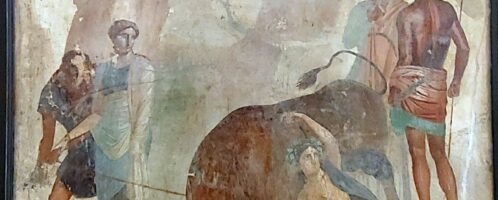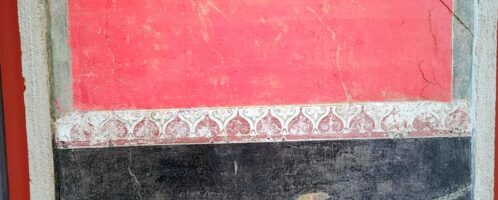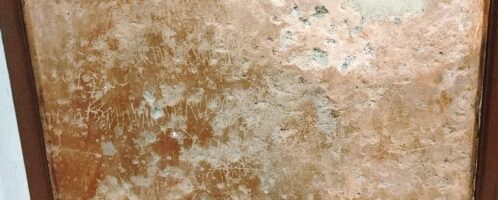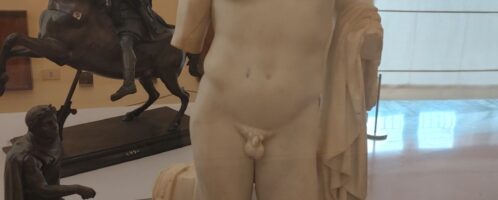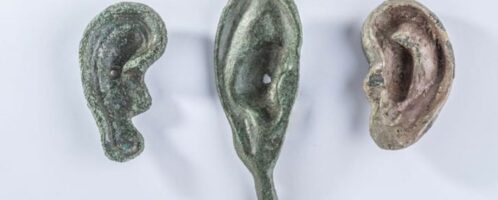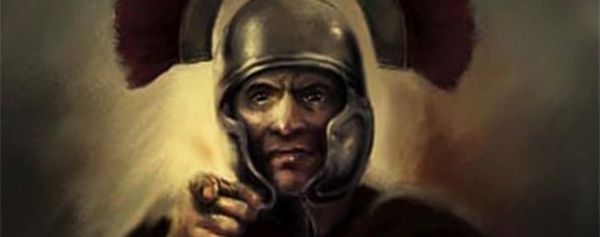Roman fresco showing Dirke tied to horns of bull
Roman fresco showing Dirke tied to the horns of a bull. According to mythology, Dirke was subjected to this death penalty by the sons of Antiope – Amphion and Zetus – the first wife of the king of Thebes, Lycus. Dirke, as Lykos’ second wife, took revenge on her predecessor. The facility is located in Pompeii. The artifact is located in the National Archaeological Museum of Naples.

